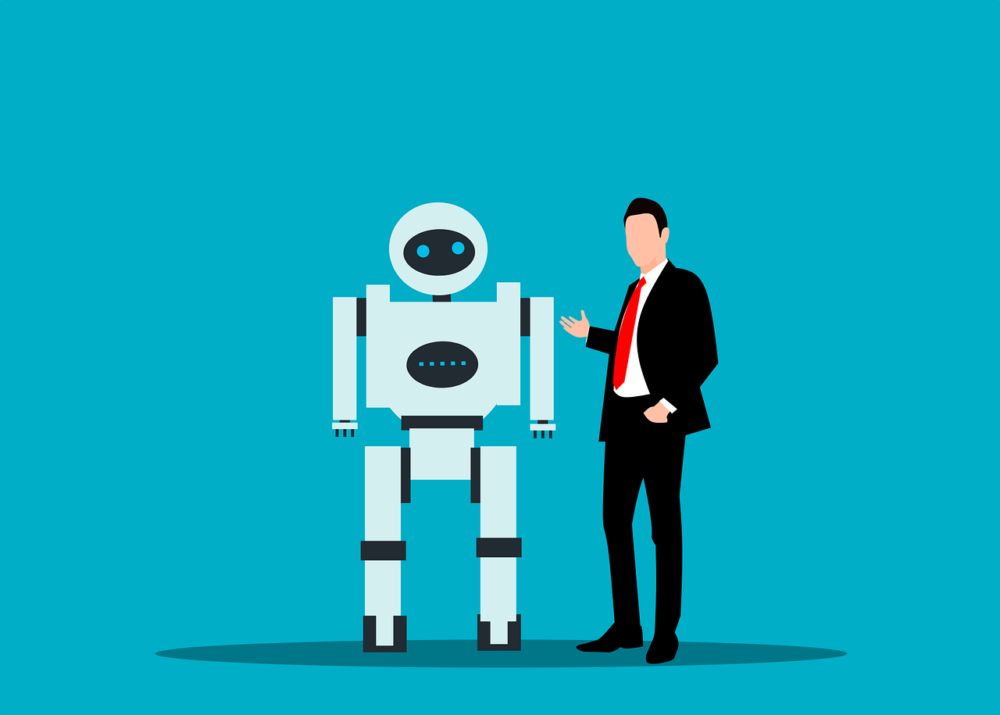The Future of Artificial Intelligence in Businesses

Industries worldwide are being transformed by artificial intelligence (AI), which has emerged as a transformational force. AI is changing how organizations run thanks to its capacity to analyze vast volumes of data, form wise predictions, and automate difficult procedures. However, mastery and strategic direction are necessary to navigate the implementation complexity of AI and realize its full potential. AI consulting services can help in this situation.
AI consulting solutions provide organizations looking to leverage the power of AI with specialized knowledge and direction. These businesses offer complete solutions, from developing an AI strategy to implementing it to providing continuous support. Their data scientists, machine learning engineers, and domain specialists collaborate closely with organizations to comprehend their requirements and create specialized AI solutions. This article will examine the possible uses, most recent developments, and potential of AI for many sectors worldwide.
Educating Oneself on Artificial Intelligence
At its foundation, artificial intelligence is the capacity of robots to mimic human intelligence. It includes several related topics, including robotics, computer vision, natural language processing, and machine learning. Artificial intelligence (AI) systems analyze enormous volumes of data to find patterns and derive conclusions or predictions.
Machine Learning: The Backbone of AI
Machine learning, a branch of artificial intelligence, allows computers to learn from data without explicit programming. Machines can recognize patterns, create data-driven predictions, and constantly improve their performance over time with the help of algorithms. Numerous industries, including recommendation systems, fraud detection, and predictive analytics, have found extensive use for this technology.
Natural Language Processing (NLP)
NLP aims to make it possible for computers to comprehend and analyze human language. It involves activities like speech recognition, sentiment analysis, and language translation. NLP-powered virtual assistants and chatbots are revolutionizing customer care, enabling companies to offer individualized and effective support around the clock.
AI-Driven Business Transformations
Predictive Analytics for Improved Decision-Making
By analyzing previous data, seeing trends, and forecasting future outcomes, AI-powered predictive analytics equips organizations to make data-driven choices. Using machine learning algorithms, companies can estimate demand, reduce risks, and improve supply chain management. Businesses may use this skill to properly distribute resources, cut costs, and spur innovation.
Changing the Customer Experience
Customer happiness is now significantly influenced by personalization. Businesses may collect and analyze enormous client data using AI technology to provide individualized experiences. By utilizing AI, companies may offer tailored advice, focused advertising, and proactive customer service. This degree of personalization improves client engagement, encourages loyalty, and boosts revenue.
Applications of AI in Various Industries
Advancing patient care in healthcare
AI has the potential to completely change the healthcare sector by providing more precise diagnoses, individualized treatments, and effective healthcare delivery. Medical image analysis using machine learning algorithms allows for detecting anomalies, predicting disease development, and supporting surgical treatments. Virtual medical assistants can provide patients with round-the-clock assistance, respond to medical questions, and make lifestyle suggestions.
Operations Streamlining in Manufacturing
The manufacturing industry is changing due to AI technologies that improve production methods and decrease downtime. Machines can identify irregularities and set up maintenance appointments before problems happen with the help of AI-powered predictive maintenance. Production productivity is increased, improved product quality is ensured, and waste is decreased thanks to autonomous robots and AI-powered quality control systems.
Banking and Finance
AI algorithms are essential for spotting fraud in the banking and financial industries. AI systems may identify abnormalities and suspect activity in real-time by analyzing enormous volumes of data, including transaction records, consumer behavior patterns, and past fraud incidents. These algorithms enable organizations to keep one step ahead of fraudulent actions as they continually learn and adjust to new fraud tendencies.
Next comes risk assessment. AI-powered risk assessment algorithms are becoming essential in the banking and finance sectors. To assess the creditworthiness of people or companies, these models examine various data sources, including credit ratings, financial statements, market patterns, and macroeconomic factors. AI assists financial organizations in making educated decisions about loans, investments, and portfolio management by automating the risk assessment process.
Retail and e-commerce
To provide individualized product suggestions, AI algorithms analyze enormous volumes of consumer data, including purchase history, browsing behavior, and demographic data. AI systems may recommend suitable items, improve cross-selling and upselling opportunities, and boost customer engagement by comprehending client preferences and trends. In the retail and e-commerce sectors, personalized recommendations help to increase conversion rates and consumer happiness.
Considering Ethical Aspects
Bias and Fairness
The data that AI systems learn from determines how objective they are. The results of biassed training data may be discriminating. Organizations must address prejudice in data collecting and use ethical principles throughout the AI development process to ensure fairness. Regular audits, inclusive teams, and open decision-making processes can aid in reducing prejudice and advancing egalitarian AI systems.
Security of Data and Privacy
Organizations must prioritize privacy and data security since AI systems rely on enormous volumes of data. To preserve confidence and stop data breaches, developing strong cybersecurity measures, ensuring compliance with data protection laws, and safeguarding sensitive customer information is essential.
Overcoming Barriers to AI Adoption
Despite the immense potential benefits of AI, the adoption of AI technology by enterprises may provide a variety of issues. These problems must be fixed to ensure smooth integration and optimize the return on AI investments.
Data Quality and Availability
Artificial intelligence (AI) systems heavily rely on pertinent and reliable data for training and decision-making. For many businesses, collecting clean and diverse datasets might be challenging. Insufficient, inconsistent, or biased data might provide inaccurate findings and flawed AI models. To address this, organizations must engage in data collection, cleansing, and enrichment processes to ensure the accuracy and availability of data for AI initiatives.
Mismatched talents and skill advancement
Since there is a bigger need for AI professionals than there is now a supply, the industry has a skill gap. Finding seasoned AI practitioners with expertise in machine learning, data science, and NLP may be challenging. To address this gap, businesses should implement initiatives to train their employees in the fundamental AI competencies. Collaboration between academic institutions and business experts may also encourage sharing knowledge and talent development.
Explainability and Interpretability
AI systems’ decision-making processes might become opaque and challenging to understand as they develop in complexity. The accountability and trust issues raised by this lack of openness are concerning. To ensure that decisions made by AI systems can be understood and justified, businesses must prioritize building understandable AI models. Model-agnostic methods and interpretable machine learning algorithms are two techniques that can improve interpretability.
Legal and Regulatory Considerations
The fast development of AI creates new legal and regulatory issues. AI usage may encroach on liability, intellectual property rights, and privacy concerns. Businesses must keep up with changing AI-related legislation and regulations to ensure compliance and reduce potential legal risks. Collaboration with legal experts can help navigate these complex landscapes and ensure responsible AI practices.
The Emergence of Edge AI
Edge AI directly deploys AI algorithms and models on edge devices, such as edge servers, smartphones, and IoT gadgets. With this method, there is no longer a requirement for constant data transfer to the cloud, which lowers latency and allows for immediate decision-making. By putting AI capabilities closer to the location where data is generated, edge AI has the potential to revolutionize many sectors. Offline AI processing is made possible, privacy is improved by keeping data local, and intelligent automation is made possible in remote areas with spotty internet.
Collaboration between AI and people
Contrary to common opinion, AI is intended to enhance rather than replace human talents. The future of artificial intelligence in the workplace is in the seamless interaction of humans and robots. Humans bring critical thinking, creativity, and emotional intelligence, but AI can automate monotonous jobs, analyze enormous volumes of data, and offer recommendations. Businesses may increase efficiency, creativity, and customer pleasure by fusing human knowledge with AI technology.

The Potential of AI in the Future
AI has great business potential in the future. Let’s look at some probable developments and trends that might affect the state of AI:
Explainable AI (XAI): Explainability is becoming increasingly important as AI systems get more complicated. To increase openness and trustworthiness, XAI wants to create AI models and algorithms that can offer concise justifications for their choices.
Quantum AI: The convergence of AI with quantum computing has the potential to completely transform this field. Complex optimization issues can be resolved by quantum AI, which can also speed up machine learning techniques and enable more accurate simulations.
Emotional AI: Emotional AI is concerned with comprehending and resolving human emotions. This makes applications like sentiment analysis, emotion detection, and individualized emotional support systems possible.
AI for Cybersecurity: With the sophistication of online threats rising, AI may be extremely useful in identifying and preventing security lapses. Cybersecurity systems driven by AI are able to recognise trends, spot abnormalities, and react to threats instantly.
AI Ethics and Governance: As the use of AI spreads, the requirement for strong ethical frameworks and governance models rises. Organizations and politicians must work together to ensure responsible AI development, solve bias and fairness issues, and define rules for AI deployment.
AI democratization
An increasing tendency in recent years has been to democratize AI, making technology available to a larger range of organizations and people. Before now, major organizations with ample resources were sometimes the only ones capable of developing and implementing AI. But technological developments and the availability of AI platforms and tools have made it simpler for companies of all sizes to employ AI.
AIaaS: AI as a Service
Businesses may access AI capabilities through AIaaS, a cloud-based paradigm, without requiring expensive infrastructure or specialized knowledge. It makes it possible for businesses to use pre-made AI models and APIs, lowering entry barriers and hastening the adoption of AI. AIaaS providers offer various services, such as image recognition, natural language processing, and recommendation systems, which can be integrated into existing applications.
Low-Code AI Development
Users of low-code development platforms may create AI apps with little to no coding by using a visual interface and pre-built components. These platforms simplify the intricacies of AI creation, enabling non-technical individuals to use it. Businesses can swiftly prototype and implement AI solutions thanks to low-code AI development, enabling a wider spectrum of people to participate in the AI revolution.
Open-Source AI Frameworks
Open-source AI frameworks like TensorFlow and PyTorch have made AI more accessible to all users. These frameworks offer tools and libraries that make it easier to design AI and promote cooperation among developers. Open-source AI frameworks boost innovation and open AI to a larger audience by sharing code, models, and best practices.
Partnerships and Collaboration
The future of AI in business depends not just on individual efforts but also on partnerships and teamwork. Organizations can overcome obstacles, exchange information, and resources, and hasten the adoption of AI by cooperating. Research partnerships between academic institutions, industrial consortia, and commercial alliances to exchange data and create AI models that benefit the ecosystem are examples of collaborative endeavors.
Continued Innovations and Advancements
Since the industry is constantly changing, businesses must keep up with the most recent developments and advances in AI. The following areas show potential for future AI developments:
Reinforcement Learning
The main goal of reinforcement learning is to teach AI agents to pick up knowledge from their interactions with the environment and to get feedback based on their actions. This strategy might help AI systems become more independent and adaptive, resulting in advancements in robotics, driverless cars, and personalized suggestions.
Generative AI
Training models to create new material, such as photos, writing, or music, is a component of generative AI. This technology may stimulate creativity and innovation by producing original and innovative results. Some examples of generative AI applications are virtual reality, simulation settings, and content creation.
AI and edge computing
By enabling real-time decision-making and analysis at the edge devices themselves, edge computing and AI reduce dependency on cloud connection while boosting efficiency and privacy. By providing quicker reaction times and offline AI capabilities, this combination has the potential to completely transform sectors like healthcare, transportation, and IoT.
Conclusion
Artificial intelligence in business has a bright future with the potential to revolutionize operations, customer experiences, and creativity across sectors. The broad acceptance of AI will be fueled by its democratization and ethical and responsible usage, enabling companies of all sizes to benefit from its potential. Collaboration, partnerships, and continual learning will be essential to navigate the changing AI landscape and realize its full potential. Businesses may gain a competitive edge, spur development, and sculpt a future powered by intelligent technology by adopting AI and its breakthroughs.
Would you like to receive similar articles by email?





